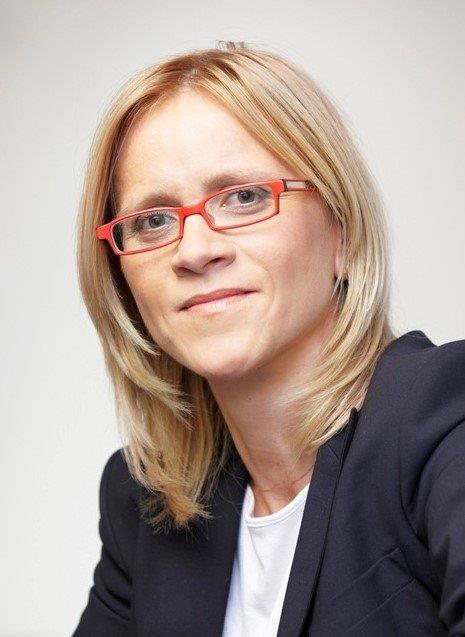26 October 2015
Interview with... Magdalena Jaworska - Acting President of Polish Air Navigation Services Agency (PANSA)
Acting President of Polish Air Navigation Services Agency (PANSA)
[Cleared n°9- Year XII - October- 2015]
Acting President of Polish Air Navigation Services Agency (PANSA)
[Cleared n°9- Year XII - October- 2015]

Poland is at a crossroad between Europe and the east. What operational and technical challenges are you facing?
Poland is one of the Central and Eastern Europe countries with the biggest growth of air traffic in the last 10 years. But PANSA can operationally be characterized, since its creation in 2007, as based on high ATCOs operational productivity, suffering from the limited number of ATCOs and excessive level of ATFM delay, even though this year PANSA has reduced the delay from more than 1,5 minute in 2014 to 0,2 min/flight. In the area of technical development our agency has finalized the biggest ATM System investment since the 1990s. We are now using modern, trajectory-based system, covering all flight-planned traffic in Warsaw FIR.
It is supplemented by IT tools to provide all the necessary information for operational staff. But still, our starting point determined a lot of challenges. Without having time for a "deeper breath", PANSA has jumped into various technical development and deployment areas, be it SESAR 2020 preparation, SESAR Deployment Manager membership or the first steps towards the iTEC Collaboration, as well as huge investment plan exceeding 1 billion PLN. All these activities are resource consuming and that's just one of the challenges - to grow quickly in the development and deployment areas.
There are also operational and financial challenges. First: keep the pace of ATCO number increase, till it is balanced by the demand on the workforce. This demand will be the result of the expected traffic level after vertical split of ACC airspace, which is still before us, planned in March 2016. We must think also about the increasing level of non-operational activities of ATCOs, coming along with the development and deployment of new technologies. Second: the traffic drop due to the Ukrainian crisis is very serious, demolishing Poland's forecasts by more than 12%. This is my personal challenge to overcome this serious situation.
But even with this decrease, we need to get ready, and we will be, for the recovery and development in terms of operational headcount, technology and procedures.
SESAR, FABs, Deployment Manager, environmental initiatives, how is PANSA addressing the new environment created with the Single European Sky?
I must admit that PANSA has entered into the SES initiatives broader than any other East European ANSP. Being in SESAR DM, preparing for SESAR 2020, continuing FAB activities, PANSA had to find synergies. For example, our major deployment projects are aligned with the major FAB commitments. In terms of environmental initiatives we have been on the safe side for years, offering both direct flights and the route network very close to optimal.
What is coming next is the free routing. Here, various possibilities have been considered, from entirely FAB-oriented, through operational co-operation with other inter-FAB initiatives, up to the initiative of Gate One, where PANSA is one of the founder members. Very particular challenge for PANSA is to bridge to non-EU States. It is inevitable that the neighbouring non-EU ANSPs would follow the EU developments. PANSA shall be ready to the state-of-the-art technologies transfer on behalf of the EU ANSPs community.
What are PANSA key priorities for the future at national and international level?
Both levels have one common denominator for PANSA - the ability to keep growing both technically, operationally and as an organisation as well as EU - non EU catalyst. Building the bridge, eastern partnership - we should take honest care about it, as I have just mentioned.
It is not also a secret that PANSA ability to grow as an organisation is limited due to our legal status as a State Legal Entity and inability to act through shares, at domestic or foreign level. It must also be managed in 2016.
The role of ANSPs is changing, how cooperation among ANSPs can help in achieving your objectives?
The cooperation among ANSPs is crucial. All elements of the future ATM in Europe are showing that single ANSP will not be able to provide effective services. Any provider must either be co-operating and staying active in shaping the services, or just buy services. Tertium non datur. And PANSA's ambition is to actively participate in shaping the future. That's why we joined the A6 Alliance and that's why we offered our neighbours the common approach to SESAR 2020, which resulted in establishing the B4 Consortium.
There are not so many women driving companies in our sector, you are one of the few. What is your opinion and experience in managing a company in the ATM environment?
Women are present in various enterprises and in politics - you can see that in even broader scope in many countries these days. And it is really good. The ATM sector may seem particular, as dominated by tough characters. But it is not. You need to talk, understand and convince - the use of force is only necessary when you have no choice. Like in any other activity. When you take a look at the usual experience - sometimes male pride is an obstacle. For a woman it is just the breakthrough that needs to be done.
My personal experience in building Polish infrastructure (roads and rails since 2008) gives me that unique combination of managing the challenges, delivering the results and creating the best environment for growth.


